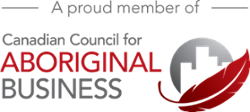Environmental stewardship first came to the forefront in the 1980s with the introduction of basic environmental health and safety (EHS) systems.
Forcing Compliance, the Rise of Environmental Stewardship
The 80s were a time where people were becoming more aware that business operations had a significant, unsustainable effect on the environment. EHS systems were designed to ensure compliance at the operational level, attempting to reduce emissions at the end of the process stream. This was an expensive endeavour for many corporations, meaning that cost reduction and risk aversion became the main focus of environmental stewardship.
By 1995, ISO released their 14000 – Environmental Management family of standards. Corporations who were able to implement and be compliant with a rigorous environmental management system could get their products certified. Though certification provided some assurance of environmental awareness and compliance, these systems were largely internal and not fully transparent. It was clear the public was going to continue to push companies to report further on environmental goals and targets.
Going Beyond Compliance
Environmental stewardship has continued to evolve, many companies now going beyond compliance for social accountability. In an effort to report on sustainability performance, Triple Bottom Line (TBL) accounting became the popular framework to evaluate and report on a corporation’s financial, environmental and social performance.
TBL goes beyond traditional measures of profit by incorporating the firm’s impacts on energy use, pollution, and biodiversity, among others, as well as social impacts on communities, human rights and product responsibility. Despite being widely accepted, TBL can be difficult to measure. There is no common unit to connect the three performance measurement tiers, making it difficult to add up the combined impacts, or to fully understand what the environmental and social performance measurements mean. TBL remains focused on the impact the organization has on the environment, rather than integrating sustainability strategy into the organization’s overall business platform.
A Balanced Scorecard attempts to deal with the TBL oversight by leveraging four key performance measures (Customer Satisfaction, Financial, Internal Business Processes, and Learning and Growth) to develop a balanced business strategy. While environmental stewardship isn’t recognized on a traditional Balanced Scorecard, the framework is set up to easily incorporate this additional measure. The concept of a Balanced Scorecard is built upon the idea that that financial measures only look at past performance, which isn’t a good indicator of future performance in today’s market that is ever changing.
Outcome Focused Regulation
Relatively new to the private sector are Ecosystem Service Management approaches to sustainable development. Ecosystem Services are the benefits nature provides to people. This concept has been around for over 30 years, however, it has been embedded in academia until very recently. The private sector has shown significant interest in moving away from prescriptive government regulation of environmental management to market based instruments that are outcome based rather than prescriptive “how-to” guidelines. By focusing on outcomes, the government is able to set thresholds that cannot be surpassed, and companies are able to find innovative approaches to make sure they remain below the threshold.
Outcome based regulation can encourage companies to go well beyond compliance. A number of conservation offset systems have been set up where companies can buy (if they are over a threshold) or sell (if they are under a threshold) conservation credits. By going beyond compliance, companies have an opportunity to increase revenues through this marketplace.
Furthermore, Ecosystem Service approaches attempt to translate all the benefits we receive from nature into economic terms. While imperfect, this makes integration into current sustainability reporting and business strategy straightforward, as the benefits we receive from nature are all in one unit. This also helps bridge the gap when assessing trade-offs between social, environmental and financial returns.
TBL and Balanced Scorecards are some of the more lasting business management ideas of the past 25 years. At a high level, TBL is undertaken by companies attempting to move beyond compliance and be publicly accountable for their environmental and social impacts. Balanced Scorecards, on the other hand are used more often by firms looking to incorporate sustainability directly into their business strategy. Because a Balanced Scorecard is generally used as an internal reporting mechanism, additional measures are needed to report the firm’s efforts publicly. As we continue to see environmental stewardship evolve, outcome focused regulation will likely continue to gain ground. With that, we will see a rise in ecosystem service management used to incorporate the benefits we receive from nature directly into business strategy as well as being used as a new tool in sustainability reporting.
For more information on how Ecosystem Services approaches are being used in Alberta, visit the EcoServices Network website.







